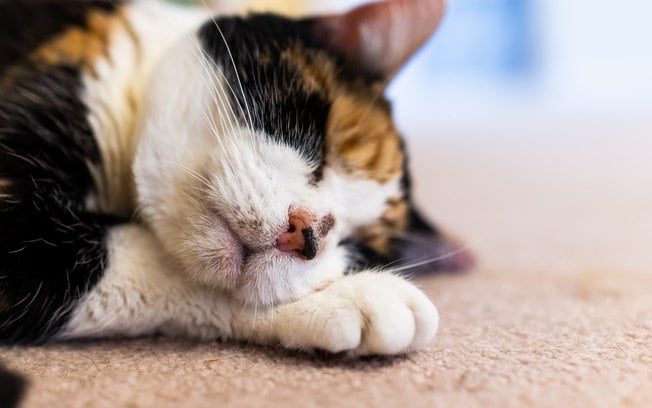Just like us, felines can have acne! They also bother pets, so it’s important to know how to treat this problem to prevent it from getting worse. Feline acne is a common skin condition that affects cats of all ages, although it is most common in young and middle-aged cats.
This condition is characterized by the development of papules, pustules, crusts, and even nodules on the skin of the cat’s chin and lips. Let’s get a better understanding of what feline acne is, its causes, symptoms, and treatment options.
Feline acne, what is it?
Feline acne occurs when the pores are plugged due to excess oil and fat on the skin, causing sores with pus and blackheads, which can worsen if there is a proliferation of bacteria in the region.
Generally, feline acne looks like dirt, appearing on the cat’s skin in the form of little black dots. It forms mainly on the chin and around the feline’s lips.
What causes feline acne?
Just like in humans, cats’ sebaceous glands can produce excess oil, clogging pores and leading to the development of acne. In other words, the accumulation of oil can be one of the causes of feline acne.
Environmental factors can also play a role, such as exposure to irritants, such as plastic or ceramic, can trigger or aggravate feline acne.
Additionally, chronic stress can compromise a cat’s immune system, making it more susceptible to developing skin problems, including acne.
Cases of low immune system, inadequate diet, lack of hygiene in the home, genetic predisposition, poor oral health, and use of plastic feeders and drinkers can also contribute to the emergence of the problem.
The main symptoms of feline
acne The symptoms of feline acne can vary, but it is usually possible to notice the following main characteristics.
- Blackheads (small black dots on the chin and near the lips);
- Pustules (small balls with an accumulation of pus) on the chin
- Itching in the chin and mouth area;
- Pain (in more severe cases);
- Scaled sores on the chin, nose, and lips;
- Alopecia (hair loss) in the chin area.
In
this case, it is important to seek help from trained veterinarians to receive guidance and ideal treatments to take care of your pet. But in general, there are some treatments to help with this process.
The procedure is focused on cleaning the affected region, applying ointments and other medications to prevent infections and improve the health of the pet’s skin and hair. In some cases, nutritional supplements containing omega-3 fatty acids can help improve skin health and reduce inflammation.
So, did you like this article? Then meet and follow us on our profiles at Facebook, Instagram, Twitter and Pinterest to Check out much more!
